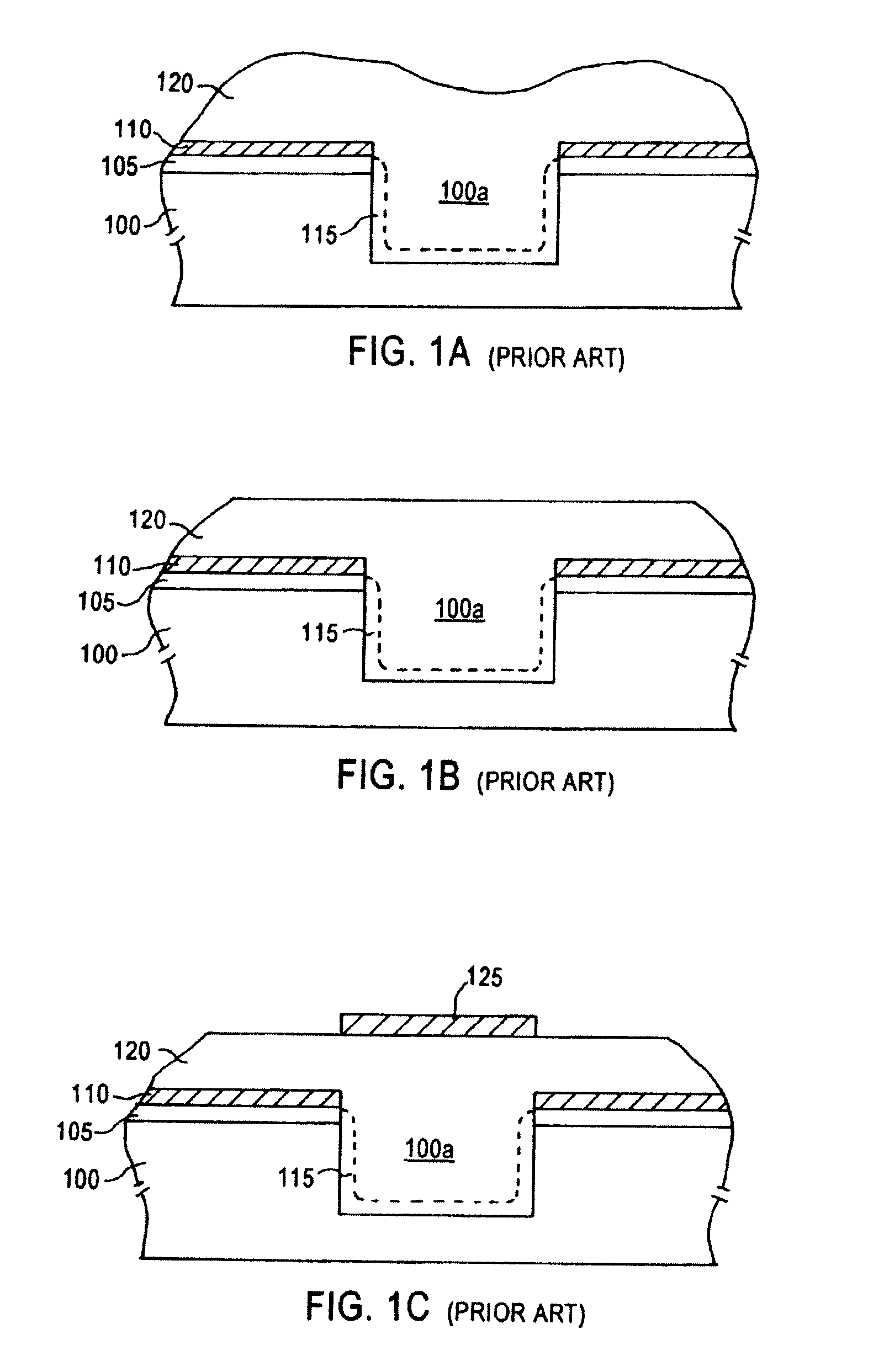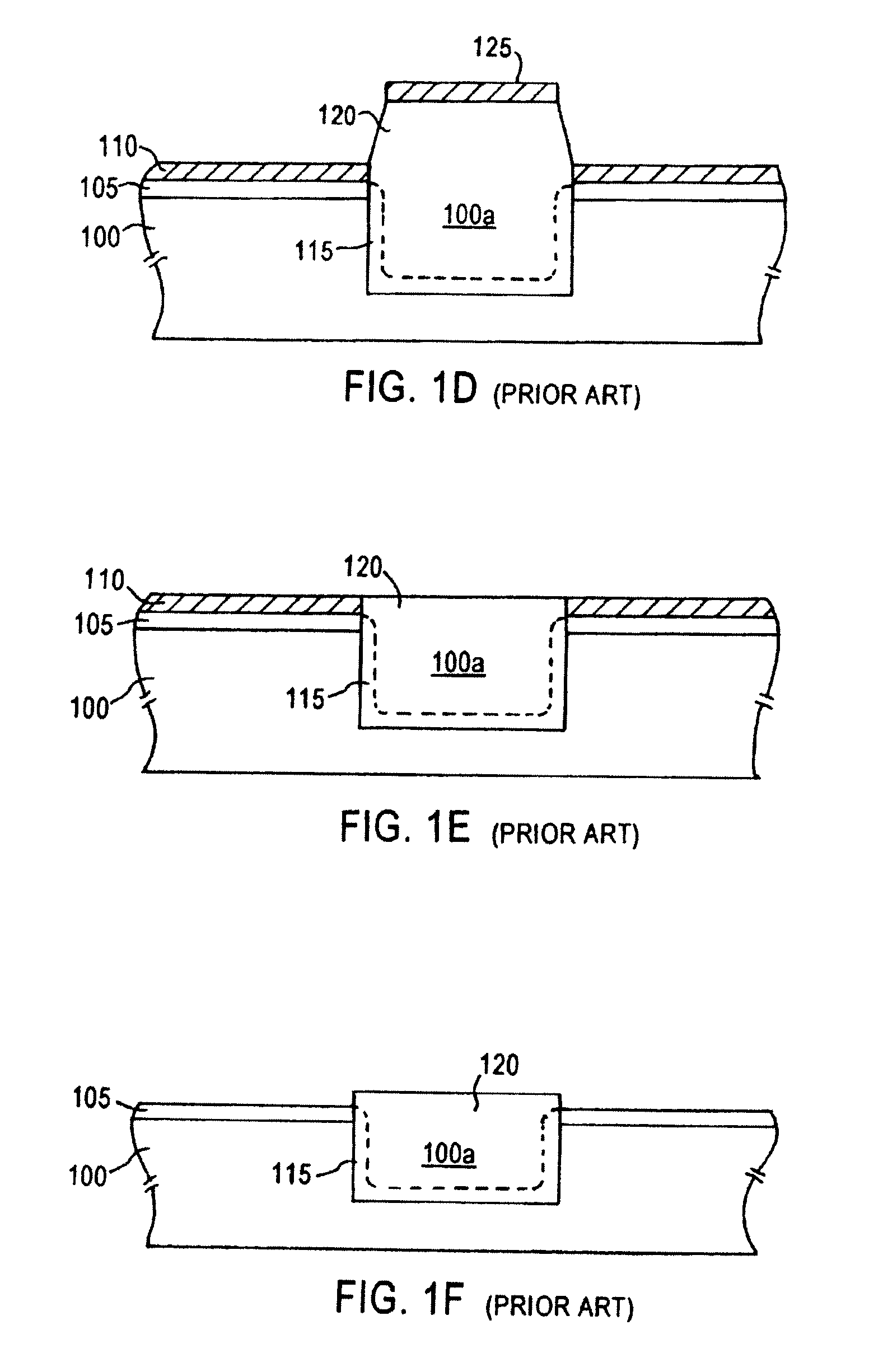Reverse Shallow Trench Isolation Process
a shallow trench and isolation process technology, applied in the field of shallowtrenchisolation type structure making process, can solve the problems of reducing the manufacturing yield, increasing production costs, and reducing the production yield, and achieves the effects of suppressing the teos rate, improving the art, and suppressing the oxide removal ra
- Summary
- Abstract
- Description
- Claims
- Application Information
AI Technical Summary
Benefits of technology
Problems solved by technology
Method used
Image
Examples
example 5
[0040]In Example 5 et seq. a slightly different manufacturing method was used. In a 3-liter beaker, a ceria dispersion (18.26 weight %), purchased from Saint-Gobain Inc., 1 New Bond Street, Worcester, Mass. 01615, was added to 1 deionized water and allowed to stir using a magnetic stirrer for five minutes. To this mixture, poly(4-vinyl pyridine) was added during a period of 4 minutes, followed by addition of tetramethylammonium hydroxide to bring the final pH to 4.0. In Examples 5, 6 and 7, the amount of ceria was varied. Polishing data is presented in Table 2.
TABLE 2Effect of Differing Percent Solid Ceria on Si3N4 / TEOSselectivity Using Poly(4-vinylpyridine)SampleExample # 5Example # 6Example 7Abrasive, ceria (D = 200 NM)0.50.71.0Poly (4-vinyl pyridine), PPM505050Tetramethyl ammonium2.73 g2.79 g2.85 ghydroxide, pH adjuster, 5%solutionpH4.014.004.1RR of Silicon nitride Avg. of 3710825906runs (A / min)RR of PETEOS Avg. of 3 runs94.55(A / min)Selectivity Avg. of 3 runs5879181(Si3N4 / PETEOS)...
PUM
| Property | Measurement | Unit |
|---|---|---|
| Fraction | aaaaa | aaaaa |
| Fraction | aaaaa | aaaaa |
| Fraction | aaaaa | aaaaa |
Abstract
Description
Claims
Application Information
 Login to View More
Login to View More - R&D
- Intellectual Property
- Life Sciences
- Materials
- Tech Scout
- Unparalleled Data Quality
- Higher Quality Content
- 60% Fewer Hallucinations
Browse by: Latest US Patents, China's latest patents, Technical Efficacy Thesaurus, Application Domain, Technology Topic, Popular Technical Reports.
© 2025 PatSnap. All rights reserved.Legal|Privacy policy|Modern Slavery Act Transparency Statement|Sitemap|About US| Contact US: help@patsnap.com


